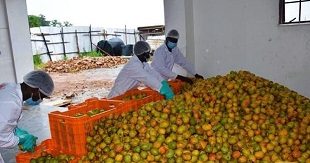
Enock Twinoburyo, a senior economist at the Sustainable Development Goals Center for Africa based in Kigali, Rwanda said the Uganda and Rwanda border impasse are far beyond the trade balance or trade channel. He said there are several other mechanisms to look at this in which either the economy – trade, financial flows in form of FDI and remittances – all of which have implications for the financial sector.
He warns that a prolonged standoff could shed off Uganda’s projected GDP growth in the range of 1-2%.
Commenting on BoU’s scandal on sale of commercial banks, Twinoburyo said that is a minor issue that can easily be rectified for the bank to operate normally.
However, he said, the central bank credibility is neutral in the eyes of Ugandans and policy makers. “What weakens its position is the lack of sufficient capitalisation and negative income statements which means the bank is not healthy to manage its monetary policy effectively,” he told The Independent. “That aside, the growth outlook remains strong going by IMF’s recent statement.”
According to the IMF statement released on February 14, Uganda’s economic growth has recovered, while progress on social indicators is mixed and poverty reduction has stalled.
It says that fiscal and external vulnerabilities have increased, reflecting scaled-up infrastructure investment, but also weaknesses in the budget process. To achieve more inclusive growth, the Fund says that the trend towards reduced budget allocations for social sectors should be reversed.
It acknowledges that BoU’s monetary policy has maintained low inflation (headline inflation stood at 2.7% in January—core inflation was 3.4%) and can stay the course. It adds that core inflation, the main target for BoU’s monetary policy is projected to accelerate and converge to the BoU’s target of 5% over the next 12 to 18 months, with a gradual shilling depreciation, higher food prices, and demand pressure from fiscal spending.
However, it raises concerns on the country’s debt that is currently around 40% of GDP. To counter further increases in projected debt and provide a buffer against shocks, it suggests that the authorities could set an operational debt ceiling of 50% of GDP in nominal terms.
“This ceiling would then determine the annual budget deficit and define a binding expenditure,” it says, adding that this framework could guide fiscal policy until oil production starts at which time the authorities plan to adopt a fiscal rule for managing oil revenues and their inherent volatility.
Positive prospects ahead
Going forward, over the next five years, growth could reach 7%, if infrastructure and oil sector investments proceed as planned, and private sector credit remains supportive.
It adds that key open issues in the nascent oil sector have recently been resolved in principle. It anticipates oil production to start in 2023.
It says that risks to the economy include further delays in oil production, weak implementation of infrastructure projects, political tensions, adverse weather conditions, health concerns in the region, and global trade tensions.
Key facts, figures about the economy
- Lending rates on shilling denominated loans remained relatively stable in Quarter to December 2018, averaging 20.3%, with the weighted average lending rate falling to 20.2% in Dec 2018 from 20.5% in Nov and 20.4% in Oct.
- The lending rates on forex loans stood at an average of 8.2% in Quarter to Dec 2018, with the Weighted Average Lending Rate of 7.8% in Dec’ 2018, 8% in Nov and 8.7% in Oct.
- Average annual growth in PSC in quarter to Dec. 2018 was 11.3% compared to 11.1% for the Qaurter to Sept. 2018.
- Average annual credit growth to different sectors averaged 9-10% in the Quarter to 2018.
- The current account position remains weak, with the current account Deficit widening from US$1,272million in 2017 to US$2,465million in 2018 largely driven by the trade deficit which increased by 40% ($692million).
- Import bill grew by 17% ($881million) on account of a $785million increase in private sector imports for investment (machinery and equipment, gold, base metals,) reflecting a pick-up in economic activity.
- Oil imports grew by $215million, reflecting the increase in oil price in calendar year 2018, and relative to FY17.
- The impact of the import growth on the current account deficit was partly moderated by a 5% ($188 million) increase in export receipts; driven by increase in gold exports which increased by 23.2% to $514.9 million. The net exports of gold were estimated at US$52.5million.
- Reserves stood at US$3,414.5million (which is equal to 4.3 months of import cover) at end Dec-2018, up from US$3,292.6million (4.3 months of import cover) as at end Sep-2018.
- Current account deficit is projected to widen by US$882Million between Jan to June-2019, building up to a deficit of US$2.1billion at end-FY2018/19
- Year-on-year, the shilling depreciated by 1.7% in January 2019 compared to 2.5% in December 2018.
****
Source: Bank of Uganda MPR – February 2019
 The Independent Uganda: You get the Truth we Pay the Price
The Independent Uganda: You get the Truth we Pay the Price



Thank u for your service